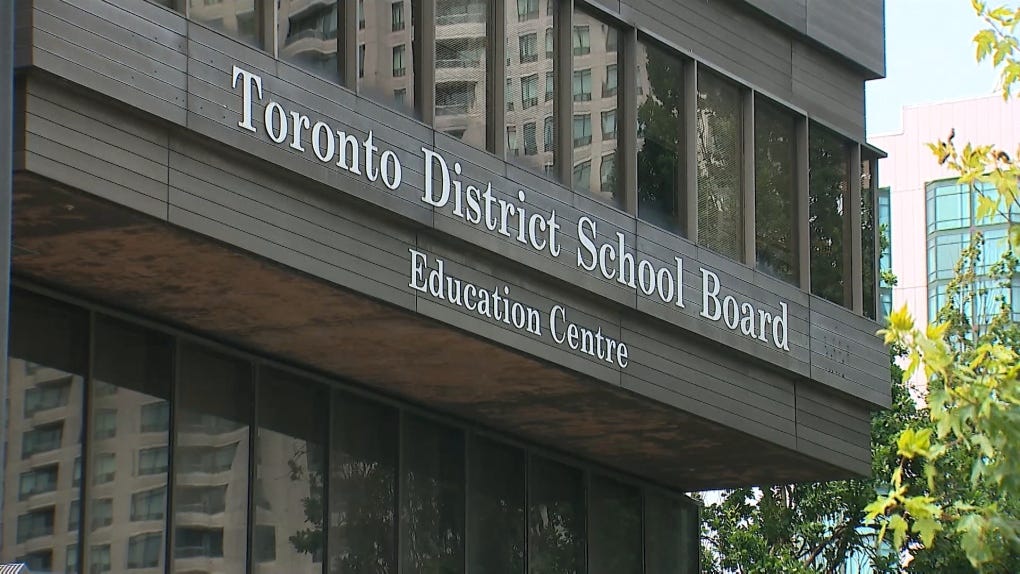By
The following discussion concerns the development of radical education and practice in Canada. The recent examination of “the politics of the individuals and the groups that initiated the era of identity-based policy-making in Toronto schools,” by Dr. M in his long-form academic essay, Fulcrum and Pivot, provides the key ingredients for today's entree of ideas.
In order to access the full essay with extensive footnotes (not found on the web version) download the pdf of Fulcrum and Pivot:
The incursion of radical politics into the Toronto District School Board began in 1969 when a majority of New Left “reformer” trustees were elected. These reform trustees and other Canadian radical Educators at the time were influenced by American New Left organizer Saul Alinsky. He offered instruction to radical activists in the form of several books. In Rules for Radicals: A Pragmatic Primer (1971), Alinsky “defended the arts both of confrontation and of compromise involved in community organizing as keys to the struggle for social justice.”1 Among his methods of “community building” were many morally questionable techniques meant to “induce disenchantment and discontent”2 in otherwise quiet and stable communities.
Who were the New Left?
Simply put, an organic movement of radical Marxist organizers who rose to prominence in the late 1960s. The fundamental axiom of the New Left, as with their counterparts today, was that liberalism was “not enough.”
“The central tenets of the New Left system of ideas can be sketched as follows: like the classical Marxists (the Old Left), they aimed to carry out a utopian transformation of society ‘to be begun in the urgency of the here and now, and requiring collective rather than individual action’.3 Importantly, with the Old Left, they remained the staunch and intractable opponents of capitalism.4 Further, like all opponents of the Western program from Vladimir Lenin on, they are liable to declare themselves as ‘anti-imperialists’.”5
The New Left’s main departure from the Old Left was in their promotion of decentralization (which arose from their scepticism of the hierarchical tendencies of the Old Left). “...this political objective was paired with a community organizing strategy committed to ‘building organization in order to achieve power’.6 This would manifest at the TDSB under the guise of the “community-led initiative.”
Eventually, the creation of a School Community Relations Department led to the adoption of the decentralized community-led model:
“And just how sound is it exactly for education policy-makers to seek the knowledge of activist ethnic community members and to draw on their perceptions of how some ethnic children don’t take home the best results? According to one of the TDSB’s first black trustees, who had no problem acknowledging this for a rhetorical purpose other than mine, for ‘communities’ outside the school ‘it's hard to put your finger on what the problem is, other than to say it's racism, because you're not in there and you can't figure out the blockages’.”7
Race Policy at the TDSB
“Trustees themselves have short-circuited some of the normal response to professional staff opinion by developing a concept of consultation called the workgroup.”8 - Reform trustee Frank Nagle (1975)
The first stage of the reformers’ race policy-making at the TDSB involved the establishment of the Work Group on Multicultural Programs. In 1976 this Work Group produced its final report in which the creation of “community-led initiatives” were recommended.
“In establishing this community feedback mechanism, the Work Group has put into practice (into praxis) key components of the New Left playbook: identity politics and community control of schools. Decentralization and the simultaneous emphasis on non-white community feedback enact the new formula of reform and revolution: the acquisition of power so that structural changes in the political, economic and social order might be achieved.”9
The creation of a “community control” mechanism served as a self-perpetuating strategy, in the form of a permanent office that would take over from the Work Group on Multicultural Programs:
“Such a proposition will seem innocuous to most, certainly to most who do not perceive that community control of schools can be—and in this case, is—part of a clandestine political strategy.”10
The next stage after the multicultural Work Group, was the creation of a Sub-committee on Race Relations (SCRR) which produced a first draft report in 1978. Indeed, the multicultural Work Group called for the creation of a “Committee for Multiculturalism to monitor and implement the 99 recommendations put forward in the final report.” In turn, this Committee for Multiculturalism would find “that much of its mandate actually (involved) bridging the policy domain of race relations through the scope of multiculturalism and, for increased efficiency, the committee therefore called for the creation of the Sub-committee on Race Relations (SCRR) in 1977.”11
An “important stage in the struggle for equity”
In 1979, the Final Report of the Sub-Committee on Race Relations was submitted to the TDSB. The board accepted all 119 recommendations, which then became the basis of race relations in Toronto schools, setting the trend for the rest of Canada.
The transition to anti-racist theory and policy began in approximately 1984 and culminated in 1992 with the passing of the NDP’s Bill 21 which required the introduction of anti-racism curricula in Ontario schools.
“As Marxist School Community Relations Department member Tim McCaskell related, in 1980, after the report was finalized and it came time to hold workshops in the board’s 132 schools on the new polices, board functionaries had a difficult time selling SCRR’s findings: they ‘couldn't get beyond the first part of the report before teachers ‘started saying it was all lies.’ Most of the few teachers of colour didn't feel strong enough to contradict their colleagues. And then there were always those people of colour who did get up and say, to much applause, 'I've never experienced racism, it doesn't exist.' So then what were we supposed to do?"12
Recommendations in the Final Report from the SCRR included, “a) emphasize achievements of visible minorities and their values as positive examples, and b) foreground facets of Canadian history that reveal poor treatment of visible minorities (#11); The study of race relations be built into the social studies of elementary schools and a unit on race relations and human rights be included in appropriate high school courses (#15).”13
Conclusion
In late 2022, Dr. M and I set out to write a series of essays we called The Great Illiberal Subversion. In that series we identified and examined several patterns in the methods of radical leftwing activism. We developed a rough “sequence of subversion,” to help trace the evolution of race based policy in Canada. Here is that sequence:
i) Demographic change beginning around 1970; ii) The press in the late 1970s shifting focus to incidents of racial conflict; iii) "Calls" for action as a result of the racist picture of Canada presented by the media; iv) The government chooses appeasement and greenlights race relations committees.14
The reader can consider this sequence of illiberal subversion as the backdrop over which the 1970s era New Left “reformers” operated. In our essay, From Police Brutality to Race Relations, we pointed out that “it was through the government’s formation of race relations committees that multiculturalist ideology was turned into Social Justice and became race antagonism.” This was illustrated in the race policy-making sequence described in Fulcrum and Pivot that occurred at the TDSB: i) Multicultural Work Group ii) Sub-Committee on Race Relations iii) Anti-racism legislation
Identifying these patterns means exposing the radical’s playbook. The more we know about their operating procedures, the better equipped we are to mount an effective defense. For more on this topic, and incase you haven’t yet, here is your reminder to read Dr. M’s thorough examination of the New Left Reformer takeover of the TDSB, Fulcrum and Pivot.
Further reading on this topic:
From Race Relations came Race Agitation
From Police Brutality to Race Relations
And here is where you can find links and summaries to all Great Illiberal Subversion essays - The Ontology of the Great Illiberal Subversion
___
Thanks for reading! There are now two ways to support Woke Watch Canada through donations:
1) By subscribing to the paid version of the Woke Watch Canada Newsletter for - $7 Cdn/month or $70 Cdn/year
2) By making a contribution to the Investigating Wokeism In Canada Initiative, which raises the funds necessary to maintain and expand Woke Watch Canada’s research and investigation into Dysfunctional Canadian School Boards, Education, Indigenous Issues, Free Speech, and other areas of Illiberal Subversion and the Canadian Culture Wars.
Fulcrum and Pivot (pg - 9)
Bracke 2014.
https://www.thecanadianencyclopedia.ca/en/article/new-left
See Churchill 2001, 230: “The conceptualization of the United States as a modern empire was a core component of the New Left’s political critique, one which questioned the rationale of international anti-communism while at the same time rehabilitating older Marxist critiques of imperialism.” See also McCaskell, a Marxist activist, who writes “American imperialism, as my friends and I unapologetically called it...” (McCaskell 2005, 3)
Breines 1980, 420–421.
Fulcrum and Pivot (Pg - 26)
Nagle 1975, (pg - 36)
Fulcrum and Pivot (Pg - 22)
Fulcrum and Pivot (Pg - 24)
Connelly and Clandinin 1984, ( pg - 45)
Fulcrum and Pivot (Pg - 29)
Fulcrum and Pivot (Pg - 31)
This blueprint, currently under development at the lighthouse think tank, represents an attempt to conceptualize and to theorize how the process of illiberal subversion played out in Canada (that is, how radical identity-politics, through the intervention of opinion shaping mass media and through an imposition on institutional policy everywhere, became the dominant culture in a land once socially regulated by the principles of liberal individualism and individual rights). For the major demographic shift in Canadian immigration occurring in the early 1970s, see Breton (1986, 58). The shift in media reporting from a standard of integrity and objectivity to one of fomenting social transformation is discussed by historian Keith Windschuttle (1997 and 1998) — as Windschuttle argues, this reversal on journalistic principles comes with the 1970s rise of “culture studies” as the major component of media theory across Western universities (search “culture studies” on wiki for an introduction, yes, this approach to journalism really was produced by three Marxist intellectuals). The characterization that the media focused on stories of (white) youth violence against minorities in the 1970s comes from the dissertation of Malgorzata (2013, 3) which studies race and resistance in 1970s Toronto. The same source states that, while the media is quick to blame the youth in question for such incidents, minority activists use the media fanfare generated on such occasions as an opportunity to influence public opinion and institutional policy: “visible minority groups, however, argued that overt racism was symptomatic of a larger problem: institutional racism.” This process by which black panther leader and Marxist Stokely Carmichael’s theory of institutional / systemic racism came to be a major aspect of the social sciences everywhere is described by sociologist Tim Berard as follows: “although Carmichael and Hamilton do not define institutional racism solely in terms of its effects, the social–psychological dimension in their account may have been so politically divisive or so empirically inadequate that subsequent authors would define institutional racism more and more in terms of its effects, largely neglecting or fudging questions of causal mechanisms and institutional processes” (Berard 2008, 737).








Work groups = soviets.
Those radical school boards are ndp-captured.
Thanks, this is good and informative. Its clear that these radicals, who have become the Establishment having been on this quest for two generations, and we (the new counterculture) have our work cut out for us. The one reassuring thing in my mind is that because our society is NOT racist, and most ordinary people live free and good lives and everyone mostly gets along, its harder for the Establishment radicals to sell their message, because most people dont really buy what they are selling.